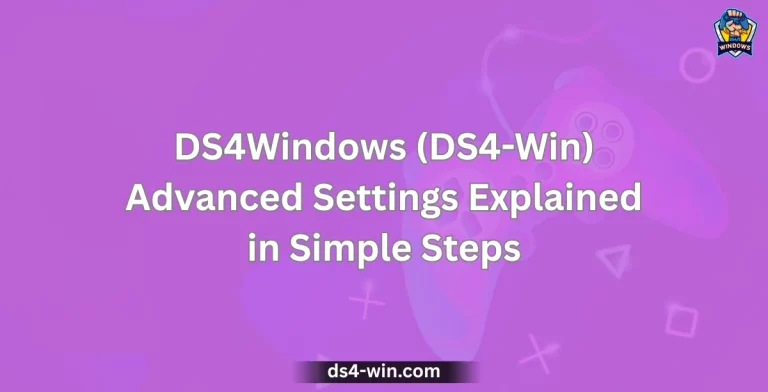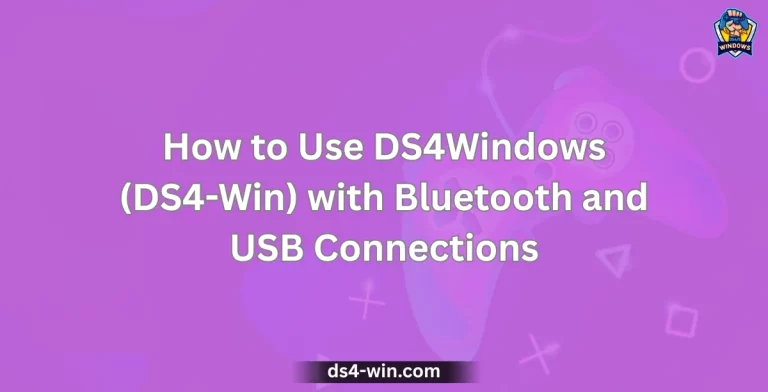How to Reduce Input Lag in DS4Windows (DS4-Win) for PC Gaming
Have you ever pressed a button on your PS4 controller and noticed the action appeared on your PC screen a moment later? That short pause is input lag, and in competitive gaming, even a fraction of a second can cost you the win. I struggled with this issue when I first used DS4Windows (DS4-Win), but with the right tweaks, I managed to cut the lag down and enjoy smooth, responsive gameplay. In this guide, I’ll explain why input lag happens and how you can reduce it step by step for a better gaming experience.
How to Reduce Input Lag in DS4Windows (DS4-Win) for PC Gaming. (Quick Answer)
You can reduce input lag in DS4Windows (DS4-Win) for PC gaming by:
- Using a wired USB connection
- Updating DS4Windows and controller drivers
- Disabling Bluetooth power-saving mode
- Enabling exclusive mode in DS4Windows
- Adjusting polling rate and latency settings
- Lowering system resource usage during gameplay
What is Input Lag in DS4Windows?
Input lag is the small delay between pressing a button on your controller and seeing the result in the game. In DS4Windows, this delay can be caused by several factors:
- Connection type: Wired connections generally have lower latency than Bluetooth.
- Polling rate: How often your controller sends signals to your PC.
- Driver performance: Outdated or faulty drivers may add delay.
- System resources: Running too many background apps can slow input response.
- Power settings: Windows power-saving features may throttle Bluetooth or USB performance.
Understanding these causes will help you apply the right fixes.
Why Reducing Input Lag Matters in PC Gaming
In gaming, every millisecond counts. Input lag can:
- Affect accuracy in shooting games like Call of Duty or Apex Legends.
- Slow down combo execution in fighting games like Tekken or Street Fighter.
- Reduce immersion in single-player games.
- Cause frustration in competitive matches.
By reducing lag, you ensure better reaction times, more precise movements, and smoother gameplay.
Proven Ways to Reduce Input Lag in DS4Windows (DS4-Win)
Below are practical solutions explained in detail.
1. Use a Wired USB Connection
One of the easiest ways to cut input lag is to connect your PS4 controller with a USB cable.
- Why it works: Wired connections avoid Bluetooth interference and provide stable, low-latency input.
- Steps:
- Connect your controller to your PC using a high-quality USB cable.
- Make sure DS4Windows detects the controller in wired mode.
- Test response time in your game.
- Connect your controller to your PC using a high-quality USB cable.
Wired connections are best for competitive and fast-paced gaming.
2. Update DS4Windows and Controller Drivers
Outdated software can cause unnecessary delays.
- How to update DS4Windows:
- Visit the official DS4Windows GitHub page and download the latest release.
- Replace old files while keeping your profiles.
- Visit the official DS4Windows GitHub page and download the latest release.
- How to update drivers:
- Open Device Manager in Windows.
- Expand Human Interface Devices and Bluetooth.
- Right-click on the DS4 controller and select Update driver.
- Open Device Manager in Windows.
Updated drivers improve compatibility and performance.
3. Enable Exclusive Mode in DS4Windows
Exclusive mode prevents Windows from detecting your controller twice, which can cause conflicts and delays.
- Open DS4Windows.
- Go to Settings.
- Enable Hide DS4 Controller.
Now your PC only recognizes the DS4 through DS4Windows, cutting extra lag.
4. Optimize Polling Rate and Latency Settings
Polling rate is how often your controller communicates with the PC. A higher polling rate reduces lag but uses more resources.
- In DS4Windows, go to Controller Settings.
- Set polling rate to 1000Hz if supported.
- Adjust latency options to low.
This fine-tuning can cut milliseconds off your input time.
5. Disable Bluetooth Power-Saving Features
If you prefer Bluetooth, power-saving settings may slow your connection.
- Go to Device Manager.
- Expand Bluetooth.
- Right-click your Bluetooth adapter → Properties.
- Under Power Management, uncheck Allow computer to turn off device to save power.
This ensures stable Bluetooth performance.
6. Close Background Apps and Optimize System Performance
High CPU or RAM usage can cause lag spikes.
- Close heavy apps like Chrome, Discord overlays, or recording tools during gaming.
- Use Windows Game Mode to prioritize game performance.
- Keep GPU and chipset drivers updated.
A lighter system means faster response times.
7. Adjust In-Game Settings for Responsiveness
Games also affect latency.
- Disable V-Sync if you notice heavy input lag.
- Lower graphics settings to increase FPS.
- Use Low Latency Mode in NVIDIA or Radeon Anti-Lag in AMD settings.
These tweaks reduce game-side delays.
8. Use a High-Quality Bluetooth Adapter
If wired isn’t an option, use a dedicated Bluetooth 4.0 or 5.0 dongle.
- Choose adapters with low-latency profiles.
- Avoid built-in laptop Bluetooth, which may add delays.
- Place the adapter close to your controller to reduce interference.
9. Optimize Windows Power Plan
Windows defaults to Balanced Mode, which may throttle performance.
- Open Control Panel → Power Options.
- Select High Performance or Ultimate Performance.
This keeps your system running at full capacity during gaming.
10. Recalibrate Controller in DS4Windows
Over time, analog sticks or triggers may cause input delays.
- Open DS4Windows → Controller Configuration.
- Run calibration tools for sticks and triggers.
- Save profile and test responsiveness.
Recalibration ensures smoother input recognition.
Troubleshooting Common Input Lag Issues
Even after applying fixes, you may face specific issues. Here’s how to solve them:
- Lag only in Bluetooth mode → Switch to wired or upgrade your Bluetooth adapter.
- Lag after Windows update → Reinstall drivers and reconfigure DS4Windows.
- Random input delay → Check for wireless interference from Wi-Fi or other devices.
- Lag in specific games → Adjust in-game settings or create a custom DS4Windows profile.
Expert Tips for Competitive Gamers
If you’re serious about reducing every millisecond of input lag:
- Use a 240Hz monitor with low response time.
- Connect your PC via Ethernet instead of Wi-Fi for smoother online matches.
- Disable background recording tools like Windows Game DVR.
- Keep your DS4 controller firmware updated.
Frequently Asked Questions
1. Does Bluetooth always cause more input lag than USB?
Yes, Bluetooth connections generally introduce more latency than wired USB. However, with a high-quality Bluetooth 5.0 adapter, the difference can be minimized.
2. Can DS4Windows completely remove input lag?
No, input lag can’t be removed entirely because some delay always exists between input and response. However, DS4Windows optimizations can reduce it to an unnoticeable level.
3. Why does my DS4 controller lag only in some games?
Some games handle input differently. If lag occurs in specific titles, adjust graphics settings, V-Sync, or latency options within the game.
4. Is DS4Windows safe to use?
Yes, DS4Windows is safe when downloaded from the official GitHub source. Avoid third-party sites to ensure security and trust.
5. How much input lag is normal with DS4Windows?
A normal input lag with DS4Windows is usually 1–3 milliseconds on wired USB and 5–10 milliseconds on Bluetooth. If your lag feels higher, it may be due to outdated drivers, interference, or system performance issues.
6. Can using Steam Input instead of DS4Windows reduce lag
Steam Input can manage controllers directly, but many gamers find DS4Windows offers more customization and equal or lower input lag when properly configured. The choice depends on your setup and game preferences
7. Does controller battery level affect input lag?
Yes, a low battery can sometimes increase lag when using Bluetooth. To avoid this, keep your PS4 controller charged or use a wired USB connection for consistent performance.
Conclusion
Reducing input lag in DS4Windows (DS4-Win) isn’t complicated. By switching to a wired connection, updating drivers, tweaking polling rates, and optimizing your PC’s performance, you can enjoy smoother, faster gameplay. Whether you’re a casual gamer or competing online, these steps will make your controller more responsive and improve your gaming experience.
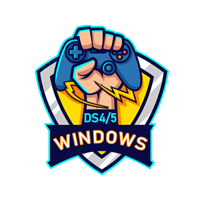
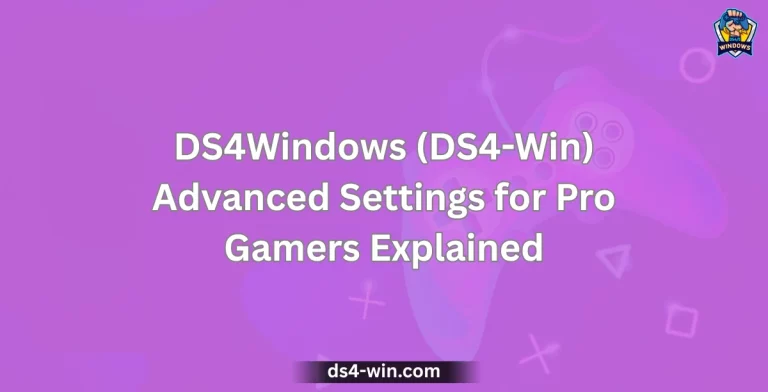
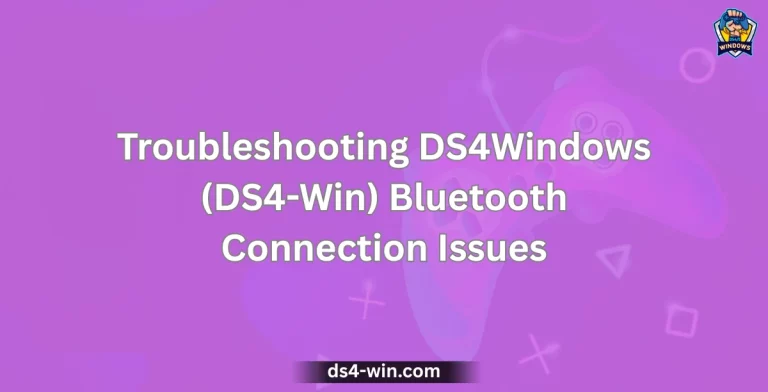

![DS4Windows (DS4-Win) Not Working on Windows 10 & 11? Easy Fixes You Should Try [2025]](https://ds4-win.com/wp-content/uploads/2025/08/ds4-win.com-6-768x392.webp)
